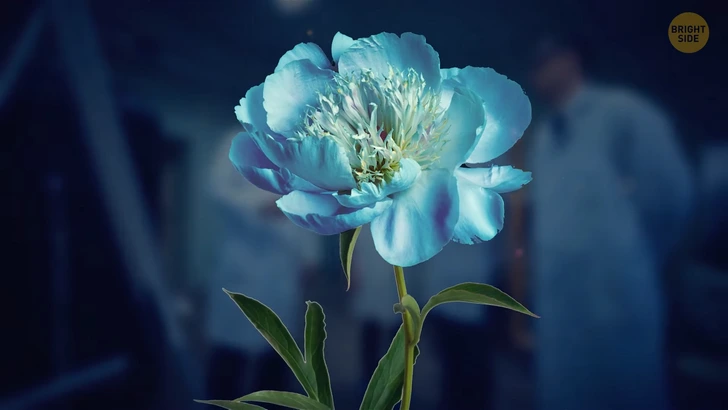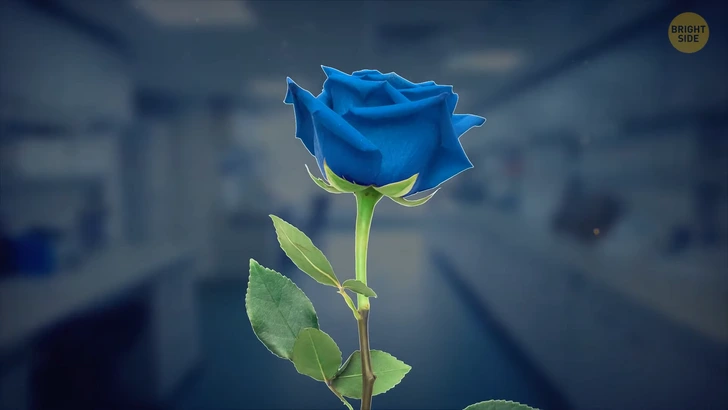Guess what? Scientists have announced a breakthrough in floral engineering: the creation of the world’s first artificially engineered blue rose! While roses naturally come in a spectrum of colors—white, pink, yellow, and red—blue has been notably absent. However, researchers from Tianjin University and the Chinese Academy of Sciences have changed that.
Using two specific bacterial enzymes, the team managed to convert L-glutamine, a compound found in rose petals, into a blue pigment called indigoidine. They introduced these engineered bacteria into the petals of a white rose, resulting in a temporary blue hue at the injection site. However, this process isn’t yet perfect. The color fades quickly and appears only in small areas. The researchers aim to develop roses that produce blue pigment naturally without the need for bacterial injections.

You might have seen blue roses before, but they aren’t naturally blue. Some methods involve dyeing the roots of white roses with blue dye or using floral spray paint designed for flowers.
Despite nature’s decision to keep blue roses a mystery, their symbolic meaning endures. Blue roses represent the unattainable and mysterious, symbolizing dreams and desires that seem just out of reach. In some cultures, receiving a blue rose is believed to grant the fulfillment of one’s wishes.

Now, why do flowers come in different colors? Flower colors result from various pigment molecules in flower cells, influenced by specific genes. Two main types of genes are involved: one group encodes the proteins necessary for pigment production, while the other regulates these processes.
The primary pigments responsible for flower colors are anthocyanins and carotenoids. Anthocyanins create reds, blues, and purples, while carotenoids produce yellows and oranges. Enzymes, which are proteins that facilitate biochemical reactions, play a crucial role in synthesizing these pigments by catalyzing various chemical reactions.
In the realm of genetic engineering, modern floral geneticists are pushing boundaries. They’ve made strides in creating flowers with unique traits, such as scentless blooms for allergy sufferers. By modifying a bacterium to produce more of a plant hormone called cytokinin, they’ve developed pollen-free geraniums.

Additionally, an Australian company called Bioconst is working on creating glow-in-the-dark flowers by incorporating fluorescent genes from jellyfish, resulting in flowers that shine with a green fluorescence.
Nature itself offers a range of spectacular flowers. For example, the Tacca Chantrieri, or black bat flower, found in Southeast Asia, stands out with its bat-like shape and dark hue. Another striking example is the white egret orchid from Asia, with its delicate, bird-like petals.

The corpse flower, native to Indonesia, is known for its enormous size and foul odor, which attracts pollinators. Similarly, the Rafflesia arnoldii, or giant padma, produces the largest individual flower on Earth and also emits a strong, unpleasant scent.
Finally, the “Dancing Girls” orchids, found in East Africa, are named for their resemblance to dancing figures and are valued for their rarity and beauty. These climbing plants are treasured by collectors for their unique appearance and limited availability.



